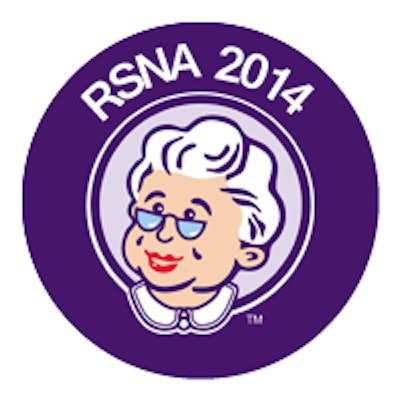
CHICAGO - Patients may be accessing their radiology reports more often through online patient portals, but do they understand what they're reading? Not very well, if research presented on Thursday at RSNA 2014 is any indication.
A team from Massachusetts General Hospital (MGH) gave surveys to more than 100 patients, asking them to read and rate their comprehension of eight radiology reports. The MGH group found that patients often have trouble understanding the reports. Patients also tended to prefer shorter reports and often requested an explanation that included lay terminology.
"Radiologists should consider this structured feedback from patients when attempting to establish a more patient-centered practice," said presenter Dr. Mark Mangano, a second-year radiology resident.
With the emergence of patient portals, patients are increasingly reading their radiology reports. This has elicited growing concern among referring physicians about how patients are reacting to these reports, particularly in regard to patient anxiety, Mangano said.
Prior studies in the literature that asked patients about their preferred level of detail in reports have shown heterogeneous results. As a result, the researchers sought to further investigate patients' feedback and their degree of comprehension when asked to read an actual radiology report.
Mangano and colleagues disseminated surveys to patients when they arrived for contrast-enhanced CT and MRI studies at MGH outpatient imaging centers. Each patient received eight randomly selected deidentified reports: two radiography reports, two ultrasound reports, two CT reports, and two MRI reports. For each report, patients were asked to rate their level of comprehension on a scale of 1 to 5, with 5 indicating the most comprehension.
They were also asked to identify any problems in the report, such as unclear or technical language, discrepancies, or typos, and whether the report was too long or too short, he said. Participants were given the option to provide free-text questions or comments.
The researchers also gathered potential confounding data, such as the patients' prior experience with radiology reports and their educational status.
A total of 104 patients (45 men, 59 women) participated in the study, producing 832 total report evaluations. Seventy-one percent of the respondents were between the ages of 31 and 60, and 30% were between 51 and 60. Ninety-two percent had at least some college experience, and 19% had postgraduate degrees.
Overall, the main level of comprehension was 2.53 (on the scale of 1 to 5). Patient-reported problems with the reports were as follows:
- Unclear language: 60%
- Too long: 10%
- Typos: 5%
- Too short: 4%
- Discrepancies: 1%
In 20.1% of evaluations, patients requested an explanation of the report in lay terms. Unsurprisingly, patient comprehension was inversely proportional (r2 = 0.69, p = 0.01) to report length, and longer reports were proportional to increased patient-identified problems (r2 = 0.72, p = 0.008), the researchers noted.
In addition, the comprehension of patients who had prior experience with their own radiology reports was greater than the comprehension of patients with no experience (mean comprehension score = 2.76 and 2.26, respectively; p = 0.0006).
"Our data suggest that radiology reports are not well-understood by patients, who identified the technical language and long length of reports as the most common problems," he said. "These results really argue for the inclusion of lay terminology in reports, as some literature has suggested."
Mangano acknowledged some limitations of his study, including its use of a select patient population presenting for an imaging study at a larger academic center. He also pointed out the demographics of the patient group, which included nearly 20% with advanced degrees. Finally, there was a selection bias of patients opting into the study.
"In terms of future direction, an area for potential growth is the development of an online system that may be integrated with the patient portal, where patients could give structured feedback regarding their radiology reports," he said. "You can imagine as patients log in to their patient portal and go to access their radiology reports, maybe one in every five or one in every 10 gets a pop-up that generates a series of questions asking for feedback in terms of their radiology report and what their experience was like. This can serve as a mechanism to generate lots of data where you can make meaningful changes to your reporting practices."















